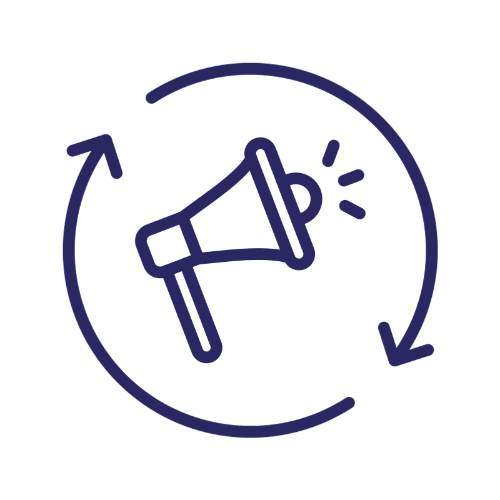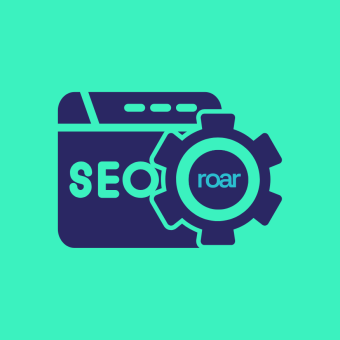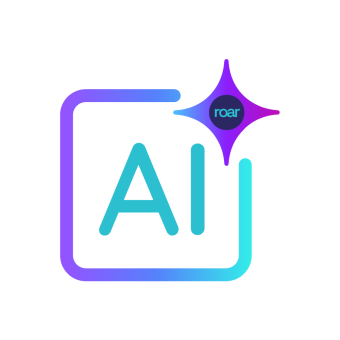Plan, launch and optimise a webinar ad campaign that actually drives sign-ups — not just clicks. This deep dive shows how to use paid media to attract the right audience, choose the right platforms, and get measurable results fast.
Why paid media campaigns work when marketing a webinar
Paid media campaigns are a highly effective way to promote webinars because they allow precise targeting, fast reach, and performance tracking – all essential when you’re working with tight dates and conversion goals. Unlike organic tactics, paid ads let you reach exactly the right audience based on industry, job title, or behaviour, and do so at scale.
They also work particularly well for webinars because of their digital nature. Whether your goal is sign-ups, attendance or lead generation, paid channels like Google Ads or LinkedIn offer reliable ways to reach B2B audiences at just the right time – when intent and availability align.
Read on for how we used Meta ads to promote a webinar in just 4 weeks for one of our estate agency clients, resulting in a 96% capacity.
How to run a paid media campaign to market your webinar
1. Set clear goals and understand the funnel
Webinars don’t just need viewers – they need the right viewers. That’s why the first step is setting a clear objective: Is your webinar designed to generate MQLs, nurture existing leads, or position your brand as a thought leader?
Knowing this helps shape your entire campaign. For lead gen, optimising for sign-ups with lead forms on Facebook or LinkedIn makes sense. For brand authority, perhaps impressions and views matter more. Either way, make sure your tracking setup matches your marketing funnel.
And get specific about your audience. B2B targeting means focusing on job titles, company size, or industry – all of which platforms like Meta, Google and especially LinkedIn let you do with precision.
2. Use keyword & audience intent to guide messaging
Search intent is everything when you’re targeting webinar registrants.
Instead of broad awareness keywords, look for longer-tail phrases that indicate someone is seeking insights or solutions, like:
-
“how to improve agency profitability”
-
“paid media strategy 2025 webinar”
-
“UK PPC trends for SMEs”
Google Keyword Planner and AnswerThePublic are great starting points. Combine this with job-title and interest targeting on LinkedIn or Meta, and your message will land where it’s most likely to convert.
3. Choose the right paid media mix
The platform you choose depends on your audience. For professional, B2B-focused webinars, LinkedIn Ads are often the gold standard. They allow you to target people by seniority, job function, or sector – perfect for higher-ticket services or specialised training.
Facebook and Instagram offer broader reach and can work well if your webinar has broader appeal or needs nurturing over a longer funnel.
Google Ads can capture high-intent search traffic – people already looking for solutions your webinar addresses. Use Discovery or YouTube pre-roll to build visibility and scale.
Don’t forget remarketing. If someone’s visited your site but hasn’t registered, they’re a prime candidate to nudge.
4. Craft creative that builds curiosity and trust
For webinars, your creative needs to do three jobs quickly:
-
Explain the value of attending
-
Show why this is credible
-
Make registration frictionless
Use concise copy and credible visuals – speaker headshots, short clips, or branded banners. Headlines like “How to Double Your Paid Media ROI in 2025 – Free Webinar” work because they promise clear outcomes.
Test different angles: authority (“Join our Head of Strategy”), urgency (“Only 100 seats”), or exclusivity (“For UK marketers only”).
Calls to action should be bold and clear: “Save Your Seat”, “Register Free”, or “Secure Access Now”.
5. Budget smartly and scale effectively
One of the advantages of webinars is that you don’t need a huge budget to drive results. Because the format is scalable and digital, your cost-per-acquisition can be very efficient if your targeting is dialled in.
Start small, and use split testing to quickly identify the best performing copy, headlines and audiences. Increase budget gradually for the combinations that deliver registrations at the lowest cost.
If you’re running multi-touch campaigns, consider separating cold audience ads from retargeting ones. For example, use top-of-funnel messaging to generate awareness, then follow up with urgency-based copy as the event date approaches.
7. Measure & optimise like a pro
Success with webinar ads comes from watching the right metrics and tweaking along the way.
Key figures to watch:
-
Click-through rate (CTR) – are people interested in your message?
-
Cost-per-registration (CPA) – are your ads converting efficiently?
-
Attendance rate – are sign-ups showing up?
Use tools like Google Tag Manager or LinkedIn Insight Tag to track performance and conversions. If CTR is low, refresh your creative. If CPA is too high, revisit your audience targeting.
Consider following up non-attendees with a “watch on-demand” campaign using the same channels to maximise ROI.
If your ads aren’t converting it might be a common, easily fixable issues – check out this article on how to fix the 9 most common Google Ads issues.
8. Stay compliant, build trust
When collecting personal data for webinar sign-ups, you must follow GDPR. Always include clear consent language in forms and use a secure platform (like HubSpot, Zoom, or GoToWebinar) to store and manage data.
Be transparent in your ads about what attendees can expect – especially if there’s any sales follow-up. This improves trust and reduces drop-off or unsubscribes post-event.
Also remember accessibility: alt text, readable fonts, and captioned videos can help make your ads and landing pages more inclusive.
Webinar campaign case study – Roar digital and Rampton Baseley
To help estate agents Rampton Baseley promote a webinar covering new landlord legislation, we developed a cross-platform campaign targeting UK landlords. Using Google Performance Max and Meta Ads, we deployed a mix of videos, stories and carousels tailored to landlords’ concerns.
With just 4 weeks before the webinar date, we were against the clock to research, design and optimise the campaigns we needed to run. Utilising the whole team meant we were able to surpass the deadline and begin advertising within a week of the client mentioning the webinar.
The results speak for themselves – more than double the target registrations and over 180,000 impressions, resulting in 3,600 clicks. Proving how valuable a clear, audience-focused strategy can be, even when the topic is complex or compliance-led.
Final thoughts – Should you use ads to market your webinar?
Webinars offer a powerful way to generate leads, educate your audience and showcase expertise – but only if people show up. That’s why paid media is a critical tool in your arsenal.
With smart planning, targeted messaging, and the right media mix, you can launch a webinar campaign that doesn’t just drive clicks, but fills your (virtual) room with the right people – ready to convert.
Want to see how this works for your brand?
We’ve built high-performing webinar funnels for agencies, SaaS firms and in-house teams alike. If you’re planning a webinar and want to drive meaningful sign-ups without wasting budget, we can help.



